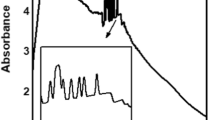Abstract
This chapter contains the introduction to knitwear chemical processing with special emphasis on dyeing theory and its practical implications. There is a lot of published material regarding the theory and kinetics of dyeing, which is quite complicated to understand, but in this chapter, a brief knowledge of theory is provided to the dyers who, by reading, can understand the relation of dyes and fibres in dyeing system and will be able to estimate the importance of its application in practical dyeing. Some important suggestions in practical dyeing are listed for dyers to consider for the improvement of dyeing quality and productivity. At the end of the chapter, sustainable approaches are also covered so that the industry can adopt them and may achieve sustainable development goals in a dyehouse.
Access this chapter
Tax calculation will be finalised at checkout
Purchases are for personal use only
Similar content being viewed by others
References
M.S. Atiq, A. Rehman, K. Iqbal, F. Safdar, A. Basit, M. Ashraf, et al., Salt free sulphur black dyeing of cotton fabric after cationization. Cellul. Chem. Technol. 53(1–2), 155–161 (2019)
T. Bechtold, R. Mussak, Handbook of Natural Colorants, vol 8 (Wiley, Hoboken, 2009)
C. Bird, P. Rhyner, The dyeing of cellulose acetate with disperse dyes X—Saturation values with mixtures of dyes. J. Soc. Dye. Colour. 77(1), 12–16 (1961)
R. Blackburn, Sustainable Textiles: Life Cycle and Environmental Impact (Elsevier, London, 2009)
A.D. Broadbent, X. Kong, The application of reactive dyes to cotton by a wet-on-wet cold pad-batch method. J. Soc. Dye. Colour. 111(6), 187–190 (1995)
B.C. Burdett, A.J. King, The dyehouse into the 21st century. Energy 9, 14 (1999)
J. Cegarra, P. Puente, J. Valldeperas, The Dyeing of Textile Materials: The Scientific Bases and the Techniques of Application (Textilia, Biella, 1992)
L. Chen, Cold pad-batch technique of energy conservation and emission reduction (1). Text Finish J 31(11), 51–54 (2009)
J. Correia, K. Mathur, M. Bourham, F.R. Oliveira, R.D.C. Siqueira Curto Valle, J.A.B. Valle, A.-F.M. Seyam, Surface functionalization of greige cotton knitted fabric through plasma and cationization for dyeing with reactive and acid dyes. Cellulose 28(15), 9971–9990 (2021)
S.A. Farha, A. Gamal, H. Sallam, G. Mahmoud, L. Ismail, Sodium edate and sodium citrate as an exhausting and fixing agents for dyeing cotton fabric with reactive dyes and reuse of dyeing effluent. J. Am. Sci. 6(10), 109–127 (2010)
M. Gopalakrishnan, V. Punitha, D. Saravanan, Water conservation in textile wet processing, in Water in Textiles and Fashion, (Elsevier, London, 2019), pp. 135–153
A. Johnson, The Theory of Coloration of Textiles (Society of Dyers and Colourists, Bradford, 1989)
J. Keaton, B. Glover, A philosophy for dyeing in the next decade. J. Soc. Dye. Colour. 101(3), 86–98 (1985)
M.R. Luo, Development of colour-difference formulae. Rev. Prog. Color. Relat. Top. 32, 28–39 (2002)
S.B. Moore, Low toxicity, biodegradable salt substitute for dyeing textiles: Magnesium acetate in direct or reactive dyeing of cotton. Google Patents (1993)
N. Nawaz, A. Rehman, M.T. Hussain, F. Safdar, K. Iqbal, Dyeing of wool with Dalbergia sisso as an eco-friendly substituent of conventional hazardous synthetic dye. J. Nat. Fibers 19(15), 10068–10081 (2022)
P. Nilani, B. Duraiswamy, P. Dhamodaran, N. Kasthuribhai, S. Alok, B. Suresh, A study on the effect of marigold flower dye with natural mordant on selected fibers. J. Pharm. Res. 1(2) (2008)
W. Nitayaphat, P. Morakotjinda, Cold pad-batch dyeing method for cotton fabric dyeing with Uncaria gambir bark using ultrasonic energy. Chiang Mai J. Sci. 44, 1562–1569 (2017)
J. Park, Dyeing laboratory developments. Rev. Prog. Color. 34, 86–94 (2004)
J. Park, J. Shore, Does dyeing practice need dyeing theory? Color. Technol. 123(6), 339–343 (2007)
J. Park, J. Shore, Evolution of right-first-time dyeing production. Color. Technol. 125(3), 133–140 (2009)
A. Patino, C. Canal, C. Rodríguez, G. Caballero, A. Navarro, J.M. Canal, Surface and bulk cotton fibre modifications: Plasma and cationization. Influence on dyeing with reactive dye. Cellulose 18, 1073–1083 (2011)
A. Prashar, Right-first-time dyeing in textile using Six Sigma methods. Int. J. Sci. Eng. Res. 4(8), 1517–1525 (2013)
R. Ramasany, H.A.M. Ahmed, S.S. Karthik, Development of microbial consortium for the biodegradation and biodecolorization of textile effluents. J. Urban Environ. Eng. 6(1), 36–41 (2012)
J. Shore, Cellulosics Dyeing (Society of Dyers and Colourists, Bradford, 1995)
P.S. Vankar, Chemistry of natural dyes. Resonance 5(10), 73–80 (2000)
G. Varadarajan, P. Venkatachalam, Sustainable textile dyeing processes. Environ. Chem. Lett. 14, 113–122 (2016)
Author information
Authors and Affiliations
Corresponding author
Editor information
Editors and Affiliations
Rights and permissions
Copyright information
© 2024 The Author(s), under exclusive license to Springer Nature Switzerland AG
About this chapter
Cite this chapter
Iqbal, K., Jamshaid, H., Mishra, R. (2024). Knitwear Dyeing: Theory and Sustainability. In: Jamshaid, H., Mishra, R. (eds) Knitting Science, Technology, Process and Materials. Textile Science and Clothing Technology. Springer, Cham. https://doi.org/10.1007/978-3-031-44927-7_6
Download citation
DOI: https://doi.org/10.1007/978-3-031-44927-7_6
Published:
Publisher Name: Springer, Cham
Print ISBN: 978-3-031-44926-0
Online ISBN: 978-3-031-44927-7
eBook Packages: Chemistry and Materials ScienceChemistry and Material Science (R0)




